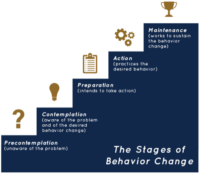Enhancing employee engagement and safety through targeted well-being programs

Credit: Rapeepat Pornsipak / iStock / Getty Images Plus
In our ever-evolving work culture, the integral relationship between employee well-being and their level of engagement is increasingly apparent. Research consistently highlights that companies investing in comprehensive wellness programs not only report higher levels of employee satisfaction but also see a noticeable uplift in productivity and safety.
This article explores the deep-seated benefits that personalized well-being programs offer and examines their significant influence on boosting employee engagement and cultivating a sense of loyalty within the workplace. Through an in-depth analysis, we aim to uncover how these tailored strategies can transform the dynamics of employee motivation and commitment.
Understanding employee engagement
Employee engagement is more than just a buzzword — it's the foundation of many thriving organization. It refers to the emotional and psychological commitment an employee has to their organization and its goals. This commitment goes beyond job satisfaction; it involves a genuine connection and enthusiasm for one's role, propelling the company forward.
Engaged employees show up every day, not just to work but to excel. They bring passion, purpose, and energy to their tasks, driving innovation and performance. This vigor is infectious, often inspiring their peers to elevate their own efforts. Moreover, these employees are less likely to leave the company, reducing turnover rates and fostering a resilient organizational culture that attracts and retains top talent.
The landscape of employee engagement is evolving. Traditionally, companies focused on income and job security to keep their employees happy. However, today's trends point towards a more holistic approach, recognizing that authentic engagement comes from fulfilling employees' complete human needs — physical, emotional, and social. For example, in the manufacturing sector, businesses are now prioritizing flexible scheduling and investing in ergonomic workplace solutions to improve physical comfort and reduce stress, recognizing that a pain free and happy employee is a productive one
As we recognize the evolving landscape of employee engagement, it's clear that well-being initiatives play a crucial role in fostering this engagement. Moving from understanding the basic concepts of employee engagement, we now explore how modern well-being programs not only support but also enhance this engagement, ensuring employees are not just present but fully involved and productive.
The role of wellness programs in employee engagement
Modern well-being programs are comprehensive and varied, encompassing everything from health screenings, mental health resources, injury prevention services, ergonomic resources, fitness programs and nutritional advice. These initiatives are designed to build a healthier workplace where employees don't just survive; they thrive.
The psychological benefits of these programs can be profound. By providing mental health resources such as counseling and stress management workshops, companies help employees navigate personal and professional challenges, leading to improved mental well-being. Additionally, these programs enhance job satisfaction by demonstrating a company's investment in its employees' overall health, making them feel valued and cared for beyond their job functions.
The link between these programs and productivity is undeniable. Employees who participate in well-being programs often exhibit reduced absenteeism because they are healthier and better equipped to manage stress. They also have more energy, which translates into higher productivity. In fact, the Bureau of labor and statics state that between 60-70% of safety incidents have some type of health or wellness issue as an underlying factor.(1) Implementing well-being programs that educate, promote and coach employees to improved health has been shown to reduce injury-related absences and enhance productivity by keeping employees physically ready to meet the demands of their jobs.
By investing in the holistic well-being of their workforce, companies not only enhance individual employee health but also drive greater productivity, innovation, and retention — ultimately contributing to the organization's overall success. Having established the critical link between wellness programs and enhanced employee engagement, let's explore what makes these programs effective.
Components of effective well-being program
Well-designed well-being programs that integrate injury prevention with wellness are crucial in maintaining a healthy, productive workforce. They are comprehensive, proactive, and tailored to the specific needs of the workforce, encompassing several key components that enhance their effectiveness.
Early intervention
Early intervention programs serve as a preventive measure, addressing minor health and discomfort issues before they escalate into more severe conditions. This proactive approach not only helps maintain the workforce's health but also contributes to significant savings on healthcare costs and reduces downtime. For example, in industries like construction, where workers often engage in physically demanding and repetitive tasks, implementing early intervention strategies to mitigate discomfort and can prevent the development of chronic musculoskeletal disorders.
Features of early intervention programs
Preventive workshops: Regularly scheduled workshops on topics like proper lifting techniques and posture correction can educate employees on preventing injuries.
Routine health screenings: Regular health screenings can detect early signs of stress, fatigue, or musculoskeletal issues, allowing for immediate intervention.
Employee coaching: One-on-one or group coaching to assist employees to improve health, wellness and or discomfort from work or non-work-related concerns.
"Early intervention is not just about preventing injuries; it's about actively cultivating a culture of health that empowers employees to manage their well-being proactively. At Atlas, we see significant reductions in both the severity of injuries and healthcare costs when early intervention strategies are implemented effectively, “ says Kris Corbett, Director, of Atlas Injury Prevention.
On-site care
On-site coaches provide immediate, convenient access to medical care, physical therapy, and psychological support at the workplace. This accessibility is invaluable for industries such as manufacturing or construction, where physical injuries are more prevalent. Immediate care expedites recovery and reduces the likelihood of further injury or the risk of overtreatment by medical facilities that routinely may overprescribe pain killers often leading to addiction.
Key benefits of on-site care
Immediate access: Employees benefit from immediate attention and coaching which helps with quicker rehabilitation and return to work, ensuring minimal disruption to both the employee's life and workplace productivity.
Reduced absenteeism: Quick and effective on-site care reduces the duration of absence from work, thereby maintaining operational productivity.
On-site care bridges the gap between traditional healthcare and workplace wellness, providing immediate and appropriate care that significantly cuts down recovery time and minimizes productivity loss. On-site resources ensure that every employee has access to the care they need right where they work, which is crucial for industries with high physical demands. This also allows for review of an employee’s workstation and work postures to coach or suggest ergonomic changes.
Customization
Customizing well-being programs to address the diverse needs of an organization's workforce is essential for their success. Each employee has unique health needs and wellness preferences, and a one-size-fits-all approach is often ineffective. For instance, a tech company might find more value in offering programs that address mental health and office ergonomic issues due to the sedentary nature of the work. In contrast, a construction company might focus more on physical fitness and injury prevention.
Key benefits of customization
Personal health plans and coaching: Personalized plans can be developed based on individual health assessments, ensuring employees receive the most relevant and effective interventions.
Feedback loops: Regular feedback from employees about the current offerings and how to improve or add programs to help fine-tune the services to better meet their needs and preferences.
"Customization in well-being programs is essential for addressing the unique challenges and needs of each workforce. At Atlas, we tailor every aspect of our solutions to meet the specific demands of different industries, ensuring that our programs are not only supportive but also truly effective,” says Kris Corbett, Director, of Atlas Injury Prevention.
By focusing on early intervention, providing on-site care, and customizing services, well-being programs can effectively address the specific health and injury prevention needs of different industries and work environments. These strategic components ensure that the programs are preventive but also supportive, adaptive, and inclusive, maximizing their impact on employee health and overall engagement.
However, implementing effective well-being programs presents several challenges, including budget constraints, limited employee interest, and resistance to organizational change. With these obstacles in mind, we now explore essential strategies that facilitate robust engagement and guarantee the effective rollout of these initiatives.
Implementing well-being programs for maximum engagement
Effective well-being programs begin with a thorough understanding of the current environment and the specific needs of its workforce. This foundational step is critical because it shapes the entire program, tailoring it to address the organization's most pressing health and safety concerns.
Keys to success
Data-driven decisions: Utilize health and safety data along with employee surveys to identify critical areas of concern and effectively tailor interventions to address these issues.
Cultural assessment: Consider the unique cultural aspects of the workplace that may affect the adoption and success of your initiatives.
Engagement strategies
To maximize participation, well-being programs must resonate with employees and motivate them to participate actively. Strategies like offering incentives, incorporating gamification, and highlighting personal benefits have proven effective. For instance, a company may introduce a health app that tracks wellness activities and rewards employees with bonuses or extra vacation days for achieving health goals.
Keys to success
Incentive programs: Create attractive incentive plans that reward healthy behaviors, such as smoking cessation programs, weight loss or stretching challenges.
Gamification elements: Integrate competitive elements like fitness challenges with leaderboards to foster a fun and engaging environment.
Feedback and adaptation
A dynamic well-being program adapts over time, responding to the evolving needs of its participants and the organization. Regular feedback from employees helps fine-tune the program, ensuring it remains relevant and effective. This could involve periodic review sessions where employees can voice their opinions and suggest improvements.
Keys to success
Continuous improvement: Implement regular check-ins and surveys to gauge program effectiveness and employee satisfaction and allow for ongoing adjustments.
Responsive adaptation: Quickly incorporate new trends and technologies that align with employee interests and emerging health data.
By incorporating these crucial strategies into their operations, organizations significantly enhance the likelihood of building a successful well-being program.
Securing a thriving future
Implementing targeted well-being programs is an investment in employee health, engagement, and organizational productivity. As business environments evolve, the integration of comprehensive well-being programs into corporate strategies becomes increasingly crucial. Start transforming your organizational culture today by investing in a comprehensive program that addresses the specific needs of your workforce.
Encourage your leadership team to champion these initiatives and witness the profound impact on your company's success. Explore how prioritizing employee health and safety can enhance productivity, employee morale, and overall business growth. Commit to a healthier tomorrow by taking the first step today.
Looking for a reprint of this article?
From high-res PDFs to custom plaques, order your copy today!







